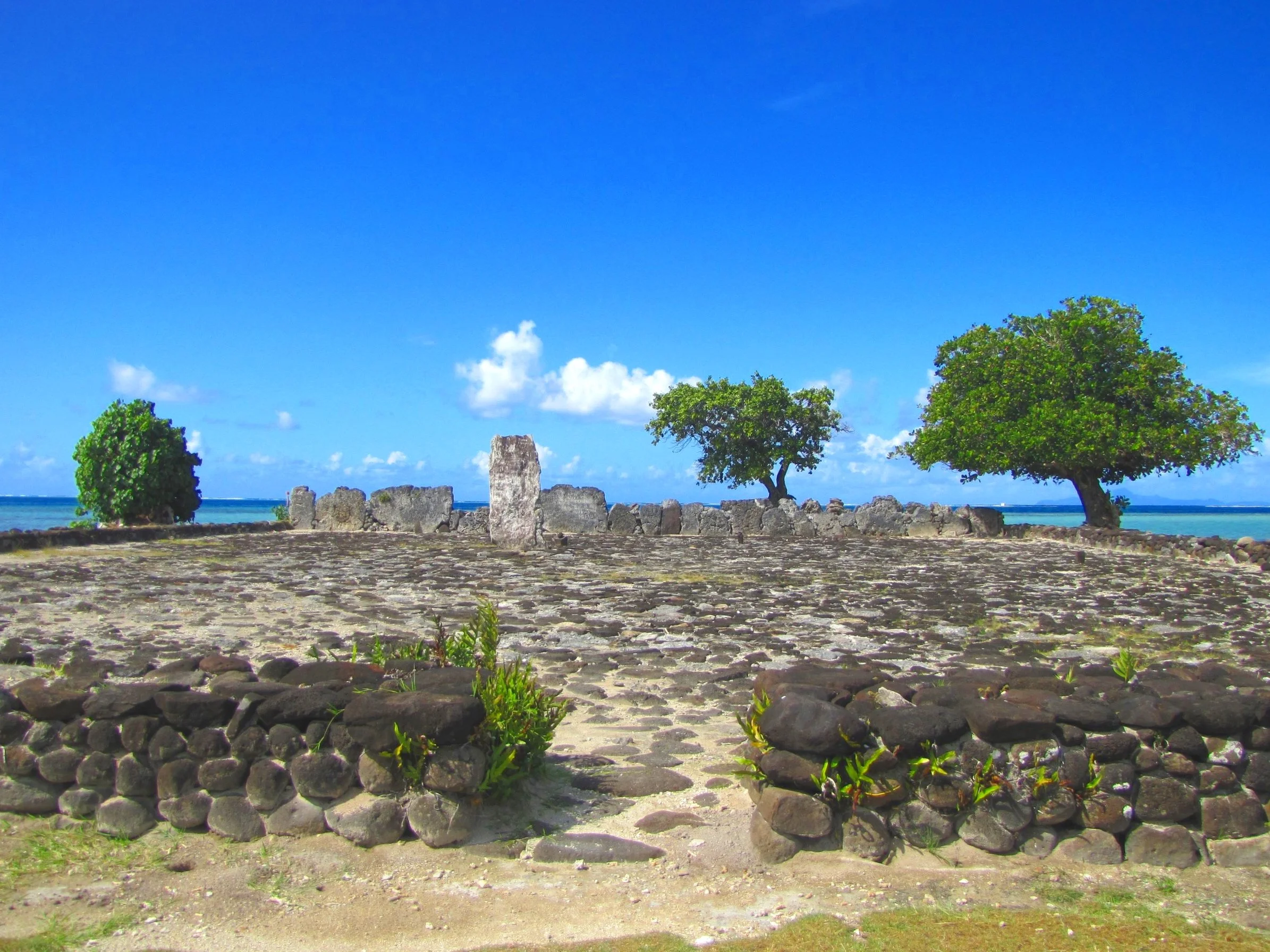THE MARAE, THE ROOTS OF POLYNESIAN SOCIETY
I would like to write today a blog post about the MARAE, sacred Polynesian temples.
A MARAE is a platform built very often with volcanic rocks or with coral, where took place old Polynesian cults, with cultural, social and political ceremonies.
The first one and the most important one is the MARAE Taputapuātea located in Ōpoa on the island of Raiatea. All the chiefs/kings of the islands of several archipelagos went to this MARAE to talk about very important social matters, to celebrate the gods or to enthrone a king.
THE IMPORTANCE OF MARAE
Ancient Polynesians were polytheists, with each island, family and profession having their own gods. Gods had specific functions that were different yet complementary. The marae had the essential function of allowing humans to communicate with the world of the gods and Polynesians came to these temples to honor the gods and ask them to influence events such as the quality of their harvests or successes at war. Only on marae could the atua – the gods – be called down through priest led rituals and become embodied in sculpted idols. When the gods came to Earth, they gave men mana, the divine strength responsible for health, balance, fertility and more. It was thought that all success came from mana and a lack of mana meant certain failure. Prolonged absence of the gods on earth weakened the mana, so they had to be called regularly and this could only be done on marae. Rituals were the only way to amass mana and were therefore essential to the Polynesian way of life.
OBTAINING MANA
Only the tahu’a – the priest – could perform these essential rituals. To get results, the tahu’a would make offerings to the gods since mana was only given in exchange for something else : in essence it was a system of gift exchange. In Polynesia, gift giving was seen as a communication between gods and men, since in the Polynesian culture a gift given almost mechanically meant a gift received in return. The best gifts would entice the gods to be generous to men and the biggest gift that the Polynesians could give the gods was human flesh in the form of human sacrifices. In the Society Islands, human sacrifices were only performed in specific circumstances and only took place on the marae of district chiefs. These were gifts of great value to the gods, who would reciprocate honorably with a gift of similar importance such as increased mana, plentiful fishing, military victory or similar.
MARAE DESIGN
A common marae has a stone-paved rectangular yard, with an ahu (an altar of vertical stones) inside; the ahu can be one level or multi-storied. In the Society Islands, marae were built with stones, blocks of basalt rock or coral slabs. Small rocks were piled up to make the wall that enclosed the yard. The ahu was shaped like a small, pyramid and was reserved for the tahu’a and the chief, called the ari’i. The center of the platform had “backrest” stones on which the priest and the chief sat to pray. There were also unu, geometric- shaped wood sculptures representing men or animals, which symbolized the family who owned the marae.
The marae was surrounded by several buildings, such as the fare ia mahana (the house of sacred treasures). Marae varied in size and importance, but the basic design was almost always the same.
Polynesians were not just religious : their lives were ruled by sacred tapu, regulations that were decreed by the gods and communicated to the population by the tahu’a. The marae, which were extremely tapu, still exude the mysteries that were handed down to them through generations of Polynesian customs. To this day, many beliefs surround these crumbling places of worship.
MARAE, THE LINK BETWEEN GOD AND MAN, AND MAN AND EARTH
Marae are found on all islands in French Polynesia, although there are some differences in architectural structure, the materials used and the rituals that were held at them. In the Marquesas, people called their places of worship me’ae. One purpose of marae throughout the islands was to provide a sort of a property deed between the people and their fenua (land). On every piece of family land, family marae were built to show that the land had been inherited and belonged specifically to that family. Later on such marae were a way for Polynesians to prove ownership and mark their property boundaries after Europeans arrived.
INTERNATIONAL MARAE, TAPUTAPUATEA IN RAIATEA
Taputapuatea was the most important marae in the Society Islands and its reach extended throughout Polynesia; it is thus considered an international class marae. Over 1000 years ago, the reputation of Taputapuatea was so far-reaching that it is said most people in Polynesia (from the Society Islands, Tuamotu, Cook Islands, and even as far as New Zealand and Hawaii) considered it the seat of spiritual power.
One reason for the marae’s vast influence is that the island of Raiatea, formerly known as Havai’i, is said to have been the cradle of Ma’ohi civilization. Traditional lore says that Polynesians navigators left from Raiatea to settle the other islands of the Pacific.


